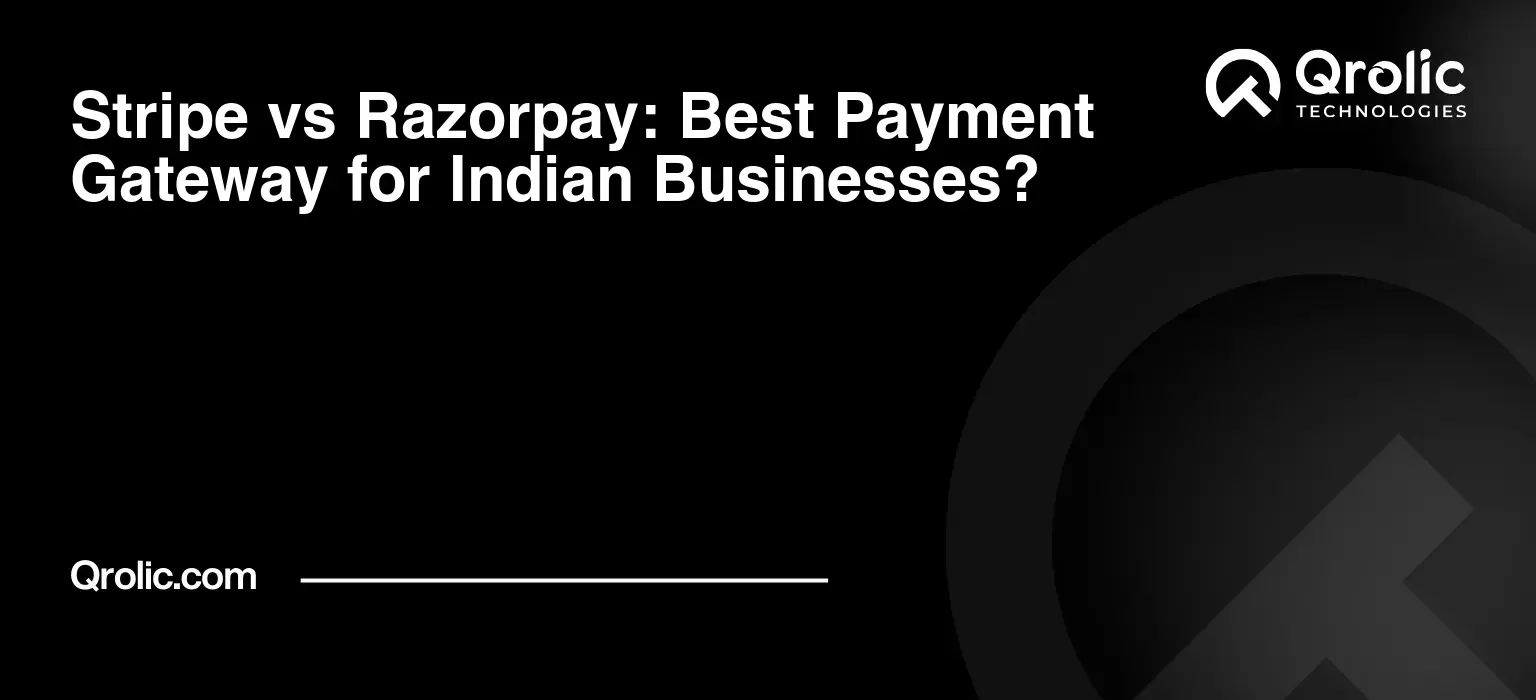Choosing the right payment gateway can feel like navigating a labyrinth. For Indian businesses, the stakes are even higher. You need a solution that’s not only secure and reliable but also tailored to the unique nuances of the Indian market. Two names often surface in this crucial decision: Stripe and Razorpay. But which one reigns supreme? Let’s dive deep and uncover the champion.
Quick Summary:
- Choose payment gateway based on your business needs.
- Stripe suits global reach and custom development.
- Razorpay excels for Indian market and easy setup.
- Consider audience, payment methods, and tech skills.
Table of Contents
- Understanding the Indian E-Commerce Landscape: Why the Right Gateway Matters
- Stripe: The Global Payment Powerhouse
- Stripe’s Key Features and Advantages
- Stripe’s Pricing Structure in India
- Stripe’s Suitability for Indian Businesses
- Razorpay: The Indian Payment Gateway Champion
- Razorpay’s Key Features and Advantages
- Razorpay’s Pricing Structure
- Razorpay’s Suitability for Indian Businesses
- Head-to-Head Comparison: Stripe vs. Razorpay
- Choosing the Right Gateway: A Step-by-Step Guide
- Beyond the Basics: Advanced Considerations
- The Future of Online Payments in India
- Qrolic Technologies: Your Partner in Digital Transformation
- Conclusion: The Verdict
Understanding the Indian E-Commerce Landscape: Why the Right Gateway Matters

India’s digital economy is booming. More people than ever are shopping online, making payments via UPI, credit cards, and a plethora of other methods. But this rapid growth comes with challenges. Businesses need to handle:
- Diverse Payment Preferences: From UPI to net banking, Indians use a wide range of payment methods. Your gateway needs to support them all.
- Security Concerns: Fraud is a constant threat. Customers need to feel confident that their data is protected.
- Regulatory Compliance: India has specific regulations for online payments. Staying compliant is non-negotiable.
- Mobile-First Approach: A huge chunk of online transactions happens on mobile devices. Your gateway must be optimized for mobile.
Choosing the wrong payment gateway can lead to:
- Lost Sales: If customers can’t pay with their preferred method, they’ll abandon their carts.
- Security Breaches: A vulnerable gateway can expose your business and customers to fraud.
- Legal Issues: Non-compliance can result in hefty fines and legal trouble.
- Damaged Reputation: A poor payment experience can tarnish your brand’s image.
Therefore, selecting the best payment gateway for India is paramount to success in the online world. You need a robust online payments solution that addresses all the challenges and capitalizes on the opportunities of the Indian e-commerce landscape.
Stripe: The Global Payment Powerhouse
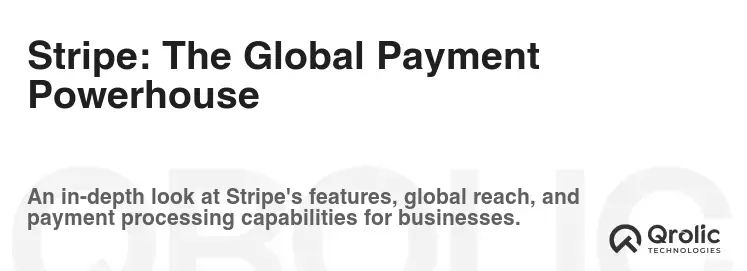
Stripe is a global payment platform known for its developer-friendly APIs, extensive feature set, and international reach. Let’s break down what Stripe brings to the table for Indian businesses.
Stripe’s Key Features and Advantages
- Global Reach: Stripe supports payments in over 135 currencies and accepts payments from customers worldwide. This is a major advantage if you’re targeting an international audience.
- Developer-Centric API: Stripe’s APIs are well-documented and easy to integrate, making it a favorite among developers. This allows for a highly customized payment experience.
- Stripe Connect: This feature allows you to build marketplaces and platforms that facilitate payments between multiple parties.
- Stripe Radar: Advanced fraud detection and prevention tools to minimize fraudulent transactions.
- Stripe Billing: Comprehensive subscription management features, including automated billing, proration, and dunning management.
- Stripe Atlas: A service that helps businesses incorporate in the US, even if they are based elsewhere. (Indirectly helpful for global ambition)
- Wide Range of Integrations: Stripe integrates with popular e-commerce platforms, CRM systems, and other business tools.
- Security: Stripe is PCI DSS Level 1 certified, ensuring a high level of security for payment data.
Stripe’s Pricing Structure in India
Stripe’s pricing in India is generally based on a per-transaction fee. It’s essential to check their official website for the most up-to-date pricing as it can fluctuate. You can expect a percentage-based fee plus a fixed amount per successful card charge. There may also be additional fees for specific features or services, such as currency conversion.
- Transaction Fees: Typically a percentage (e.g., 2-3%) + a fixed fee (e.g., ₹10-₹20) per successful transaction. The exact percentage depends on the payment method and transaction volume.
- Currency Conversion Fees: If you’re accepting payments in a currency different from your payout currency, you’ll likely incur a currency conversion fee.
- International Payments Fees: These can be higher than domestic transaction fees.
- Chargeback Fees: If a customer initiates a chargeback, you may be charged a fee, regardless of the outcome.
Example: Suppose Stripe charges 2% + ₹15 per transaction. If a customer buys something for ₹1000, the transaction fee would be ₹20 (2% of ₹1000) + ₹15 = ₹35. You would receive ₹965.
Important Note: Stripe’s complex pricing is often a point of frustration for businesses. Always carefully review their fee structure before committing.
Stripe’s Suitability for Indian Businesses
Stripe is a strong contender for Indian businesses that:
- Target a Global Audience: Its international reach is unmatched.
- Require a Highly Customizable Solution: The API-driven approach offers maximum flexibility.
- Need Advanced Fraud Protection: Stripe Radar provides robust fraud prevention capabilities.
- Have a Developer Team: Leveraging Stripe’s API effectively requires technical expertise.
- Handle Subscription-Based Payments: Stripe Billing offers comprehensive subscription management features.
However, Stripe might not be the ideal choice if:
- You primarily focus on the Indian market: Razorpay might offer better support for local payment methods.
- You lack in-house technical expertise: Implementing and maintaining a Stripe integration can be challenging without developers.
- You need direct support for UPI payments without coding: Stripe doesn’t offer UPI functionality right out of the box like some other solutions.
- Cost is a major constraint: Razorpay might offer more competitive pricing for Indian transactions.
Razorpay: The Indian Payment Gateway Champion

Razorpay is an Indian payment gateway specifically designed to cater to the needs of Indian businesses. It offers a wide range of features, supports all major Indian payment methods, and provides excellent customer support.
Razorpay’s Key Features and Advantages
- Support for all Major Indian Payment Methods: Razorpay supports UPI, credit cards, debit cards, net banking, wallets, and more. This ensures that you can accept payments from virtually any customer in India.
- Easy Integration: Razorpay offers pre-built integrations with popular e-commerce platforms, making it easy to get started.
- RazorpayX: A suite of business banking tools, including automated payouts, vendor payments, and expense management.
- Razorpay Capital: Provides access to working capital loans and other financing options for businesses.
- Razorpay Route: Allows you to split payments between multiple vendors or partners.
- Razorpay Magic Checkout: This is designed to reduce checkout abandonment rates. It simplifies the checkout process, making it faster and more convenient for customers.
- Excellent Customer Support: Razorpay is known for its responsive and helpful customer support.
- Fraud Detection: Razorpay’s fraud detection system helps to protect businesses from fraudulent transactions.
- Recurring Payments: Set up automated subscription payments for your customers.
- Dashboard and Reporting: Get detailed insights into your payment data with Razorpay’s comprehensive dashboard and reporting tools.
- UPI Autopay: Supports UPI autopay, making recurring payments even easier.
Razorpay’s Pricing Structure
Razorpay’s pricing is generally competitive, especially for Indian businesses. Like Stripe, they typically charge a per-transaction fee, but their pricing structure may differ and may have different tiers.
- Standard Plan: A percentage (e.g., 2%) of the transaction amount per successful transaction.
- Enterprise Plan: Customized pricing plans for businesses with high transaction volumes. This often includes volume discounts and dedicated support.
- Payment Gateway Setup Fee: It’s crucial to verify if there are any setup fees associated with integrating the payment gateway into your platform.
- Additional Features: Be sure to inquire about the cost of premium features, such as international payments or custom branding, which may incur extra charges.
Example: If Razorpay charges 2% per transaction and a customer purchases an item for ₹500, the transaction fee would be ₹10 (2% of ₹500). You would receive ₹490.
Important Note: Razorpay’s pricing is generally more transparent than Stripe’s, but always confirm the latest pricing on their official website.
Razorpay’s Suitability for Indian Businesses
Razorpay is an excellent choice for Indian businesses that:
- Primarily focus on the Indian market: Its support for local payment methods is unparalleled.
- Need an easy-to-integrate solution: The pre-built integrations make it simple to get started.
- Require business banking tools: RazorpayX offers a comprehensive suite of financial services.
- Value excellent customer support: Razorpay is known for its responsive and helpful support team.
- Want to reduce checkout abandonment: Razorpay Magic Checkout can significantly improve conversion rates.
However, Razorpay might not be the best fit if:
- You target a primarily international audience: While Razorpay supports international payments, Stripe’s global reach is far superior.
- You need highly customized payment flows: While Razorpay offers customization options, Stripe’s API-driven approach provides more flexibility.
- You require extremely advanced fraud protection: While Razorpay offers fraud detection, Stripe Radar is considered more sophisticated.
Head-to-Head Comparison: Stripe vs. Razorpay
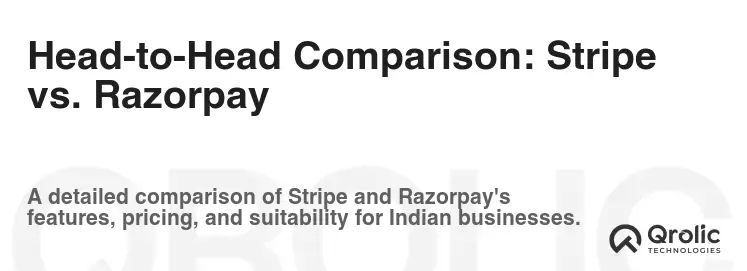
Let’s break down the key differences between Stripe and Razorpay in a table format:
| Feature | Stripe | Razorpay |
|---|---|---|
| Target Market | Global | Primarily India |
| Payment Methods | Wide range of global methods | All major Indian methods (UPI, etc.) |
| API & Customization | Highly customizable, developer-centric API | Easy integration, pre-built integrations |
| Pricing | Can be complex, international fees | Generally more transparent and competitive for India |
| Business Banking | Limited | RazorpayX: comprehensive suite |
| Customer Support | Can be less responsive in India | Excellent, responsive support |
| Fraud Protection | Stripe Radar: advanced | Robust fraud detection |
| Ease of Use | Steeper learning curve, requires technical knowledge | Simpler setup, user-friendly interface |
| International Reach | Extensive | Limited compared to Stripe |
| UPI Support | Requires custom implementation | Direct support for UPI payments |
Choosing the Right Gateway: A Step-by-Step Guide
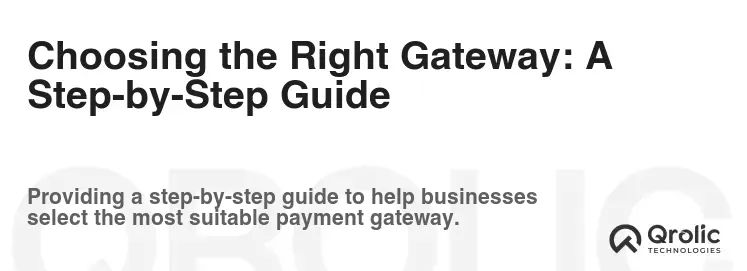
Selecting the right payment gateway is a critical decision that can significantly impact your business’s success. Here’s a structured approach to help you make an informed choice:
1. Define Your Business Needs:
- Target Audience: Who are your customers? Are they primarily in India or are they global?
- Payment Methods: What payment methods do your customers prefer? (UPI, credit cards, net banking, etc.)
- Transaction Volume: What is your estimated monthly transaction volume?
- Technical Expertise: Do you have in-house developers or will you need a simple, plug-and-play solution?
- Business Goals: What are your long-term business goals? (e.g., international expansion, subscription-based model)
- Budget: How much are you willing to spend on payment processing fees?
2. Evaluate Stripe and Razorpay Based on Your Needs:
- Use the comparison table above to see how each gateway stacks up against your specific requirements.
- Consider the pros and cons of each gateway in relation to your business needs.
- Read reviews and testimonials from other businesses in your industry.
3. Consider Key Factors:
- Pricing: Compare the transaction fees, setup fees, and other costs associated with each gateway.
- Ease of Integration: How easy is it to integrate the gateway with your existing e-commerce platform or website?
- Payment Method Support: Does the gateway support all the payment methods that your customers prefer?
- Security: How secure is the gateway? Does it comply with PCI DSS standards?
- Customer Support: How responsive and helpful is the customer support team?
- Features and Functionality: Does the gateway offer the features and functionality that you need? (e.g., subscription management, fraud protection, business banking tools)
4. Test and Pilot:
- Sign up for a free trial account with both Stripe and Razorpay.
- Test the integration process to see how easy it is to set up.
- Process a few test transactions to ensure that everything is working correctly.
- Evaluate the user experience for both you and your customers.
5. Make a Decision:
- Based on your evaluation, choose the gateway that best meets your needs.
- Carefully review the terms and conditions before signing up for a paid account.
- Implement the gateway and start accepting payments from your customers.
Example Scenario:
Let’s say you’re an Indian startup selling handcrafted goods online. You primarily target customers within India and offer UPI, net banking, and card payments. You don’t have a dedicated development team, and cost is a significant factor. In this case, Razorpay would likely be the better choice due to its strong support for Indian payment methods, easy integration, and competitive pricing.
On the other hand, if you’re an established e-commerce business selling digital products to customers worldwide and have a dedicated development team, Stripe might be a better fit due to its global reach, customizable API, and advanced fraud protection.
Beyond the Basics: Advanced Considerations
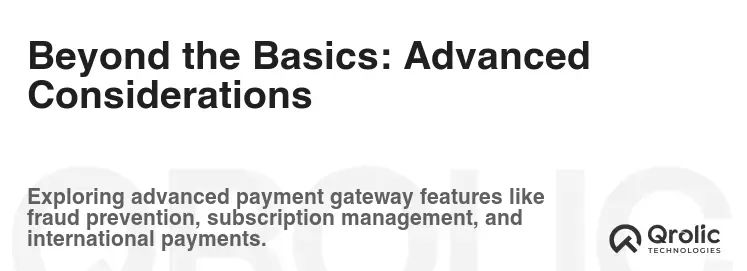
Choosing between Stripe and Razorpay involves more than just comparing features and pricing. Here are some advanced considerations to keep in mind:
- Scalability: Can the gateway handle your growing transaction volume as your business expands?
- Customization: Can you customize the payment page to match your brand’s look and feel?
- Reporting and Analytics: Does the gateway provide detailed reports and analytics to help you track your payment performance?
- Mobile Optimization: Is the gateway optimized for mobile devices?
- Security Certifications: Does the gateway hold relevant security certifications, such as PCI DSS Level 1?
- Integration with Accounting Software: Can the gateway integrate with your accounting software for seamless reconciliation?
The Future of Online Payments in India
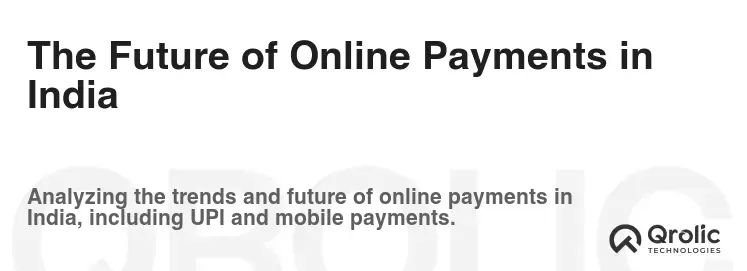
The Indian online payment landscape is constantly evolving. Here are some trends to watch:
- Increased Adoption of UPI: UPI is rapidly becoming the dominant payment method in India.
- Growth of Mobile Payments: Mobile payments are expected to continue to grow as smartphone penetration increases.
- Rise of Digital Wallets: Digital wallets like Paytm and PhonePe are gaining popularity.
- Focus on Security and Fraud Prevention: Businesses are investing more in security measures to protect against fraud.
- Integration of AI and Machine Learning: AI and machine learning are being used to improve fraud detection and personalize the payment experience.
Qrolic Technologies: Your Partner in Digital Transformation

Navigating the complex world of payment gateways and e-commerce can be overwhelming. That’s where Qrolic Technologies (https://qrolic.com/) comes in. We are a leading technology solutions provider that helps businesses of all sizes thrive in the digital age.
How Qrolic Technologies Can Help:
- E-commerce Development: We build custom e-commerce platforms tailored to your specific needs.
- Payment Gateway Integration: We seamlessly integrate Stripe, Razorpay, and other payment gateways into your website or application.
- Mobile App Development: We create mobile apps that provide a seamless payment experience for your customers.
- Digital Marketing: We help you reach your target audience and drive sales through effective digital marketing strategies.
- SEO Optimization: We optimize your website for search engines to improve your visibility and attract more customers.
- Consulting Services: We provide expert consulting services to help you choose the right technology solutions for your business.
Why Choose Qrolic Technologies?
- Experienced Team: We have a team of experienced developers, designers, and marketers.
- Custom Solutions: We create custom solutions that are tailored to your specific needs.
- Customer Focus: We are committed to providing excellent customer service.
- Affordable Pricing: We offer competitive pricing for our services.
Contact Qrolic Technologies today to learn how we can help you grow your business online!
Conclusion: The Verdict
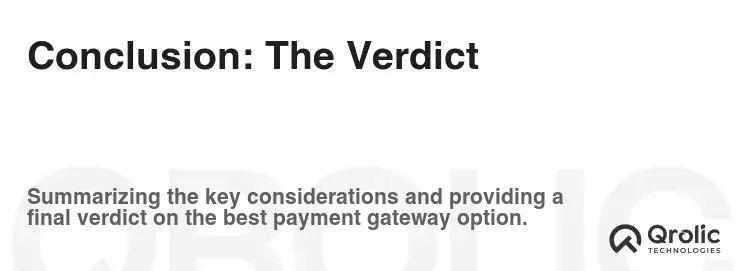
There’s no single “best” payment gateway for all Indian businesses. The choice between Stripe and Razorpay depends on your specific needs, target audience, technical expertise, and budget.
- Choose Stripe if: You target a global audience, require a highly customizable solution, and have a developer team.
- Choose Razorpay if: You primarily focus on the Indian market, need an easy-to-integrate solution, and value excellent customer support.
By carefully evaluating your needs and considering the pros and cons of each gateway, you can make an informed decision that sets your business up for success. And remember, Qrolic Technologies is here to help you every step of the way!
